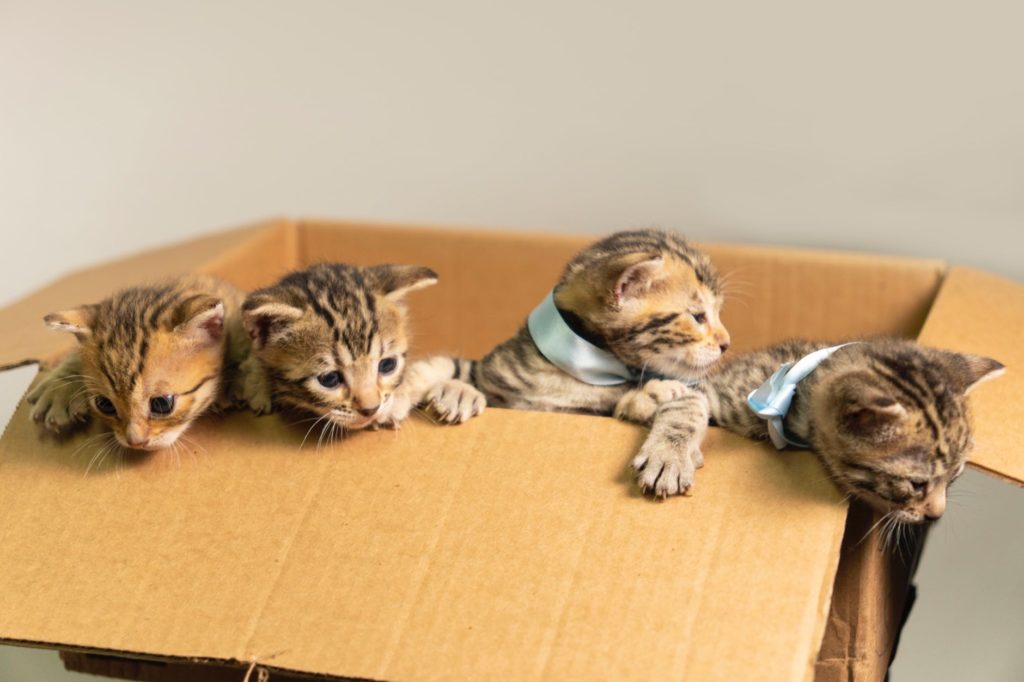Master Litterbox Mastery: 7 Steps to Solve Your Cats Litterbox Problems
Maintaining proper litterbox hygiene is crucial for the health and happiness of your feline companion. Cats are naturally clean animals, and any deviation from their litterbox habits can signal underlying issues that need addressing. In this comprehensive guide, we will explore the common causes of litterbox problems in cats and provide a step-by-step approach to resolving them effectively. Whether you are a new cat owner or an experienced one, these insights and tips will help you master litterbox management and ensure your cat remains comfortable and content.

Table of Contents
Step 1: Understanding the Importance of Litterbox Hygiene
A clean litterbox isn’t just a matter of aesthetics—it’s vital for your cats health. Cats are meticulous groomers, and they prefer a clean environment for eliminating waste. A dirty litterbox can lead to stress and discomfort, causing your cat to avoid using it altogether. Regular scooping and thorough cleaning of the litterbox at least once a day are essential to prevent odor buildup and maintain your cats litterbox habits. This will solve your cats litterbox problems.
The Link Between Cleanliness and Health
A dirty litterbox can be a breeding ground for bacteria and parasites, which can lead to infections and other health problems for your cat. For example, if your cat steps in soiled litter and then grooms themselves, they can ingest harmful bacteria, potentially leading to gastrointestinal issues. Additionally, a dirty litterbox can emit strong odors, which can be unpleasant for both you and your cat. Regular cleaning helps to minimize these risks and ensures that your cat has a clean and comfortable space to do their business. This will solve your cats litterbox problems.
Maintaining the Right Litterbox Environment
To maintain a hygienic litterbox environment, consider the following tips:
- Choose the Right Litter: Select a litter that clumps well, controls odors, and is low in dust. Clumping litter makes it easier to remove waste, keeping the litterbox cleaner for longer. This will solve your cats litterbox problems.
- Use a Liner: A litterbox liner can help prevent waste from sticking to the sides and bottom of the box, making it easier to clean.
- Deep Clean Regularly: In addition to daily scooping, thoroughly clean the litterbox with mild soap and water once a week. Avoid using strong-smelling cleaning agents, as the scent may deter your cat from using the box.
By maintaining a clean and inviting litterbox, you can significantly reduce the likelihood of litterbox problems and ensure your cat remains happy and healthy. This will solve your cats litterbox problems.
Step 2: Identifying Common Litterbox Problems
Litterbox problems can manifest in various ways, from urinating outside the box to refusing to use it altogether. Understanding these behaviors is the first step in addressing the root cause. This will solve your cats litterbox problems. Common issues include:
- Urinating outside the litterbox: This behavior can indicate territorial marking, urinary tract infections (UTIs), or dissatisfaction with the litterbox condition.
- Defecating outside the litterbox: Cats may avoid the litterbox for bowel movements due to discomfort, stress, or litterbox aversion. This will solve your cats litterbox problems.
- Avoidance of the litterbox: Some cats may simply refuse to use the litterbox due to medical issues, stress, or dissatisfaction with the litter or box type.
Behavioral Indicators and Their Meanings
To effectively address litterbox problems, it’s crucial to understand the specific behaviors your cat is exhibiting and what they might indicate:
- Spraying vs. Urinating: Spraying is a territorial behavior where cats mark vertical surfaces with small amounts of urine. It’s different from urinating, which typically involves larger amounts of urine on horizontal surfaces. Spraying is often related to stress, anxiety, or the presence of other animals. This will solve your cats litterbox problems.
- Frequent Trips to the Litterbox: If your cat is making frequent, seemingly unproductive trips to the litterbox, it could indicate a urinary tract issue. This behavior warrants a veterinary visit to rule out medical conditions. This will solve your cats litterbox problems.
- Inappropriate Elimination Locations: If your cat is choosing specific areas to eliminate outside the litterbox, it may be a sign of territorial marking or dissatisfaction with the litterbox. Take note of these locations, as they can provide clues about the underlying issue.
Case Studies and Real-Life Examples
Consider the case of a cat named Whiskers, who suddenly began urinating outside his litterbox. Upon investigation, his owner discovered that a new cat in the neighborhood was causing Whiskers to feel threatened, leading to territorial marking. By addressing the environmental stressor and providing Whiskers with additional safe spaces, his litterbox habits were restored. This will solve your cats litterbox problems.
Another example is Bella, a cat who started defecating outside her litterbox after her family moved to a new home. The stress of the move, combined with changes in her environment, caused Bella to feel insecure. By gradually reintroducing her to her new surroundings and maintaining her routine, Bella’s litterbox behavior improved.
Step 3: Medical Causes of Litterbox Problems
Medical conditions are a common culprit behind litterbox problems in cats. Conditions such as urinary tract infections (UTIs), bladder stones, and gastrointestinal issues can cause discomfort and pain during urination or defecation, leading your cat to associate the litterbox with discomfort. This will solve your cats litterbox problems. Symptoms to watch for include:
- Frequent urination or straining in the litterbox
- Blood in urine or stool
- Changes in appetite or water consumption
- Lethargy or unusual behavior
Common Medical Conditions and Their Impact
Understanding the medical conditions that can affect your cats litterbox habits is essential for early detection and treatment. Some of the most common conditions include:
- Urinary Tract Infections (UTIs): UTIs can cause pain and discomfort during urination, leading cats to avoid the litterbox. Symptoms include frequent urination, straining, and blood in the urine. Prompt veterinary treatment with antibiotics is necessary to resolve the infection.
- Bladder Stones: Bladder stones can obstruct the urinary tract, causing pain and difficulty urinating. This condition requires immediate veterinary attention, as untreated stones can lead to serious complications. This will solve your cats litterbox problems.
- Feline Lower Urinary Tract Disease (FLUTD): FLUTD is a term used to describe various urinary tract disorders that cause similar symptoms. Stress, diet, and environmental factors can contribute to FLUTD. Treatment may involve dietary changes, stress reduction, and medication.
- Gastrointestinal Issues: Conditions such as constipation or diarrhea can cause discomfort and lead to litterbox avoidance. Monitoring your cats stool and consulting your veterinarian for appropriate treatment is essential. This will solve your cats litterbox problems.
The Importance of Veterinary Consultation
If you suspect a medical issue, it’s crucial to consult your veterinarian promptly. A thorough examination and diagnostic tests, such as urinalysis, blood tests, and imaging, can help identify and treat any underlying health issues contributing to your cats litterbox problems. Early intervention is key to preventing complications and ensuring your cats well-being.
Live Pee Free! Odor Eliminator 100% Eliminates Pet Odor on Contact. 20% Off. No Enzymes, No Fragrance, No Detergent, No Bleach – Safe for Kids and Pets.Step 4: Environmental and Behavioral Factors
Cats are sensitive creatures, and changes in their environment can trigger litterbox problems. Stress and anxiety are common contributors to litterbox aversion. Events such as moving to a new home, introducing a new pet or family member, or changes in routine can unsettle your cat and disrupt their litterbox habits. This will solve your cats litterbox problems.
Creating a Stress-Free Environment
To create a calm and consistent environment for your cat, consider the following strategies:
- Safe Spaces: Provide your cat with designated safe spaces where they can retreat and feel secure. This could be a cozy bed, a perch, or a quiet room. This will solve your cats litterbox problems.
- Consistent Routine: Maintain a consistent daily routine for feeding, playtime, and interaction. Predictability helps reduce stress and provides a sense of security for your cat. This will solve your cats litterbox problems.
- Gradual Introductions: When introducing new pets, family members, or changes in the home, do so gradually. Allow your cat to acclimate at their own pace, and provide plenty of positive reinforcement. This will solve your cats litterbox problems.

Identifying and Reducing Stressors
Identifying the specific stressors affecting your cat is crucial for effective intervention. Common stressors include:
- Changes in the Home: Moving to a new home, remodeling, or rearranging furniture can be stressful for cats. Provide familiar items and scents to help them adjust.
- New Pets or Family Members: Introducing new animals or people can disrupt your cats sense of security. Gradual introductions and providing separate spaces can ease the transition.
- Loud Noises and Sudden Movements: Cats are sensitive to loud noises and sudden movements. Create a quiet and calm environment, especially during stressful events like thunderstorms or fireworks.
Case Studies and Solutions
Consider the case of Luna, a cat who developed litterbox problems after her owner adopted a new puppy. Luna felt threatened by the new addition and began urinating outside the litterbox. By providing Luna with a separate space away from the puppy and gradually introducing them with positive reinforcement, her litterbox habits improved. This will solve your cats litterbox problems.
Another example is Max, a cat who became stressed after his family moved to a new apartment. Max started avoiding the litterbox and exhibiting signs of anxiety. His owner used pheromone diffusers and provided Max with familiar items to help him adjust. Over time, Max’s stress levels decreased, and his litterbox behavior returned to normal. This will solve your cats litterbox problems.

Step 5: Choosing the Right Litter and Litterbox
The type of litter and litterbox setup can significantly influence your cats litterbox habits. Cats have individual preferences when it comes to litter texture, scent, and box size. Consider the following factors when selecting litter and a litterbox:
Types of Litter
Experiment with different types of litter to find what your cat prefers. Some options include:
- Clumping Litter: Clumping litter forms solid clumps when wet, making it easier to scoop and clean. It is available in various materials, such as clay, corn, and wheat.
- Non-Clumping Litter: Non-clumping litter absorbs moisture but does not form clumps. It requires more frequent changing but can be a good option for some cats.
- Silica Crystal Litter: Silica crystals are highly absorbent and control odors effectively. They need less frequent changing but may not be suitable for all cats.
- Natural Litter: Natural litters, such as those made from recycled paper or wood, are environmentally friendly and often preferred by cats with sensitivities.
Choosing the Right Litterbox
The litterbox itself is just as important as the type of litter. Consider the following aspects:
- Size and Depth: Ensure the litterbox is large enough for your cat to comfortably turn around and dig. A deeper box can help contain litter and reduce mess. This will solve your cats litterbox problems.
- Covered vs. Open: Some cats prefer covered litterboxes for privacy, while others prefer open boxes. Observe your cats behavior to determine their preference. This will solve your cats litterbox problems.
- Number of Litterboxes: The general rule is to have one more litterbox than the number of cats in your household. This ensures each cat has access to a clean litterbox at all times.

Litterbox Placement
Positioning the litterbox in the right location is crucial for encouraging its use. Follow these guidelines:
- Quiet and Accessible: Place the litterbox in a quiet, low-traffic area where your cat can access it easily. Avoid placing it near noisy appliances or in busy areas.
- Separate from Food and Water: Cats prefer to eliminate away from their food and water sources. Keep the litterbox in a separate area to prevent contamination.
- Multiple Locations: If you have a multi-story home, consider placing litterboxes on each floor to make them easily accessible for your cat. This will solve your cats litterbox problems.
Step 6: Implementing Behavior Modification Techniques
Once you’ve identified the root cause of your cats litterbox problem, implementing behavior modification techniques can help retrain their litterbox habits:
Positive Reinforcement
Positive reinforcement is a powerful tool for encouraging desired behavior. Use treats, praise, and affection to reward your cat each time they use the litterbox correctly. Creating a positive association with the litterbox helps reinforce the behavior you want to see. This will solve your cats litterbox problems.
Litterbox Retraining
If your cat has developed a preference for eliminating outside the litterbox, gradually reintroduce them to the litterbox using gentle encouragement and patience. Place them in the litterbox after meals or naps, and praise them for using it. Be consistent and patient, as retraining may take time.
Environmental Enrichment
Providing your cat with mental and physical stimulation through interactive toys, scratching posts, and vertical spaces can reduce stress and encourage healthy behavior. Enrichment activities help keep your cat engaged and content, reducing the likelihood of litterbox problems. This will solve your cats litterbox problems.
Addressing Specific Behavioral Issues
- Territorial Marking: If your cat is spraying or marking territory, consider using pheromone diffusers or sprays to reduce stress and discourage marking behavior. Spaying or neutering your cat can also help reduce territorial behavior. This will solve your cats litterbox problems.
- Litterbox Aversion: If your cat avoids the litterbox due to past negative experiences, create a new, positive association with the box. Use treats and praise to encourage your cat to approach and use the litterbox. This will solve your cat litterbox problems.
Case Studies and Success Stories
Consider the case of Shadow, a cat who developed a fear of the litterbox after a loud noise startled him while he was using it. Shadow began avoiding the litterbox and eliminating in other areas of the house. His owner used positive reinforcement and created a quiet, stress-free environment to help Shadow regain confidence in using the litterbox. Over time, Shadow’s litterbox habits improved, and he returned to using the box consistently.
Another example is Daisy, a cat who started defecating outside the litterbox after experiencing constipation. Her owner provided a special diet and increased her water intake to address the constipation. Additionally, they used positive reinforcement to encourage Daisy to use the litterbox again. With these changes, Daisy’s litterbox habits returned to normal.
Step 7: Long-Term Maintenance and Preventative Measures
Maintaining your cats litterbox habits requires ongoing attention and care:
Regular Veterinary Check-Ups
Schedule annual wellness exams with your veterinarian to monitor your cats health and address any emerging medical issues promptly. Regular check-ups help catch potential problems early and ensure your cat remains healthy. This will solve your cats litterbox problems.
Environmental Management
Continue to provide a stable and enriching environment for your cat, minimizing stressors and maintaining a consistent routine. Pay attention to your cats behavior and make adjustments as needed to reduce stress and maintain a comfortable living environment. This will solve your cats litterbox problems.
Litterbox Hygiene
Maintain cleanliness by scooping waste daily, cleaning the litterbox with mild soap and water weekly, and replacing the litter as needed to prevent odor buildup. Regular maintenance ensures the litterbox remains inviting and reduces the risk of litterbox problems.
When to Seek Professional Help
If litterbox problems persist despite your efforts, consult with a veterinary behaviorist or certified cat behavior consultant for personalized guidance and support. These professionals can provide tailored solutions and strategies to address complex behavioral issues.
Conclusion
Resolving litterbox problems in cats requires patience, understanding, and a systematic approach to addressing underlying causes. By identifying and addressing medical, environmental, and behavioral factors influencing your cats litterbox habits, you can help them regain their comfort and confidence in using the litterbox. Remember, each cat is unique, and finding the right solution may require persistence and adaptation to meet your cats individual needs.
By implementing the 7-step approach outlined in this guide, you can effectively solve your cats litterbox problems and foster a healthy, harmonious relationship with your feline companion. With a clean litterbox, a stress-free environment, and positive reinforcement, you can ensure your cats litterbox habits remain healthy and consistent.
Additional Resources
For further information and resources on cat behavior and litterbox management, consider the following resources:
- Books:
- “Think Like a Cat” by Pam Johnson-Bennett
- “The Cat Behavior Answer Book” by Arden Moore
- Websites:
- American Association of Feline Practitioners (AAFP)
- International Cat Care (ICC)
- Veterinary Clinics:
- Consult with your veterinarian or a veterinary behaviorist for personalized advice and support.
Taking the time to understand and address your cats litterbox problems can lead to a happier, healthier life for both you and your feline friend. With patience, consistency, and the right approach, you can master litterbox management and ensure your cat feels comfortable and secure in their home environment.



